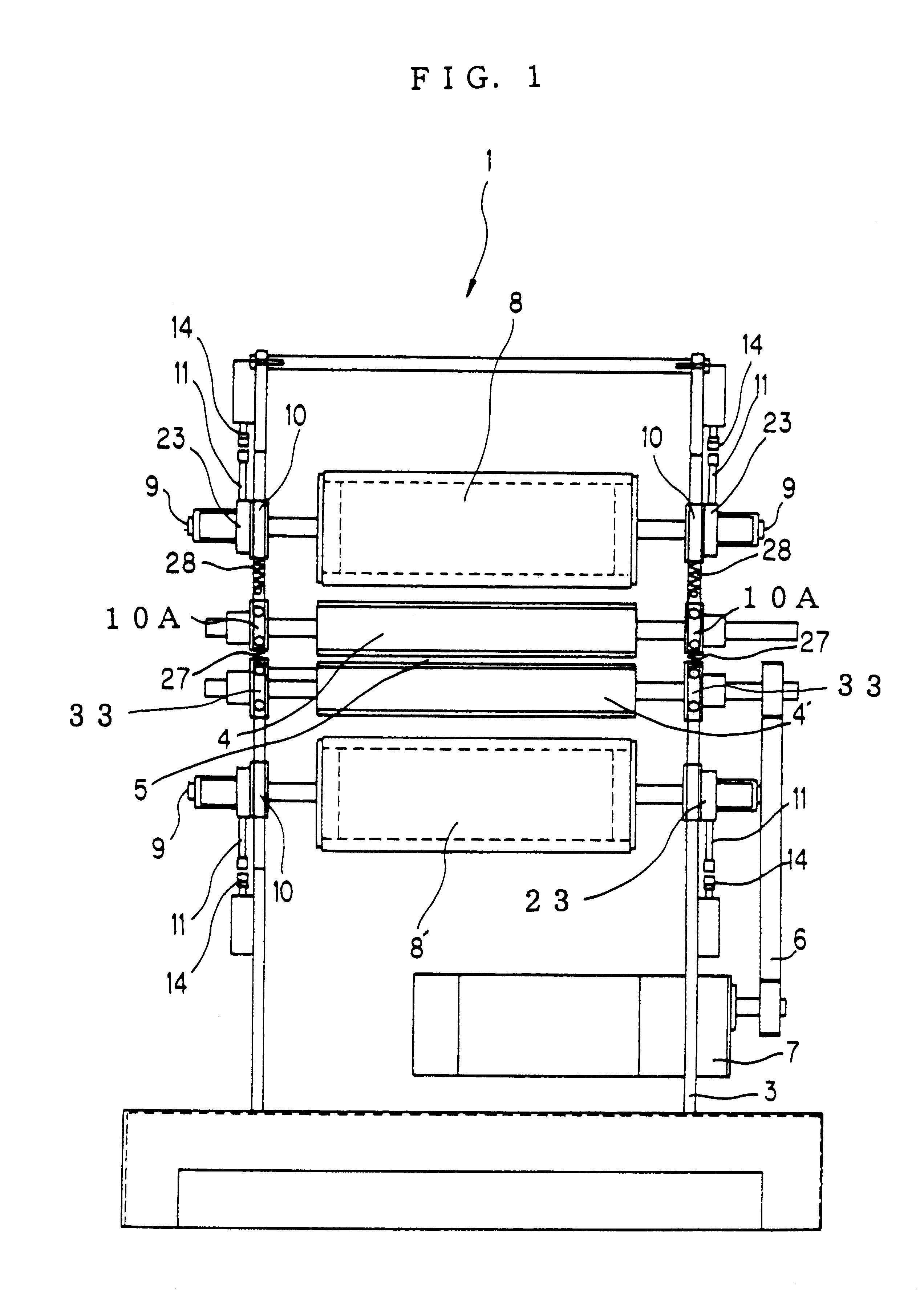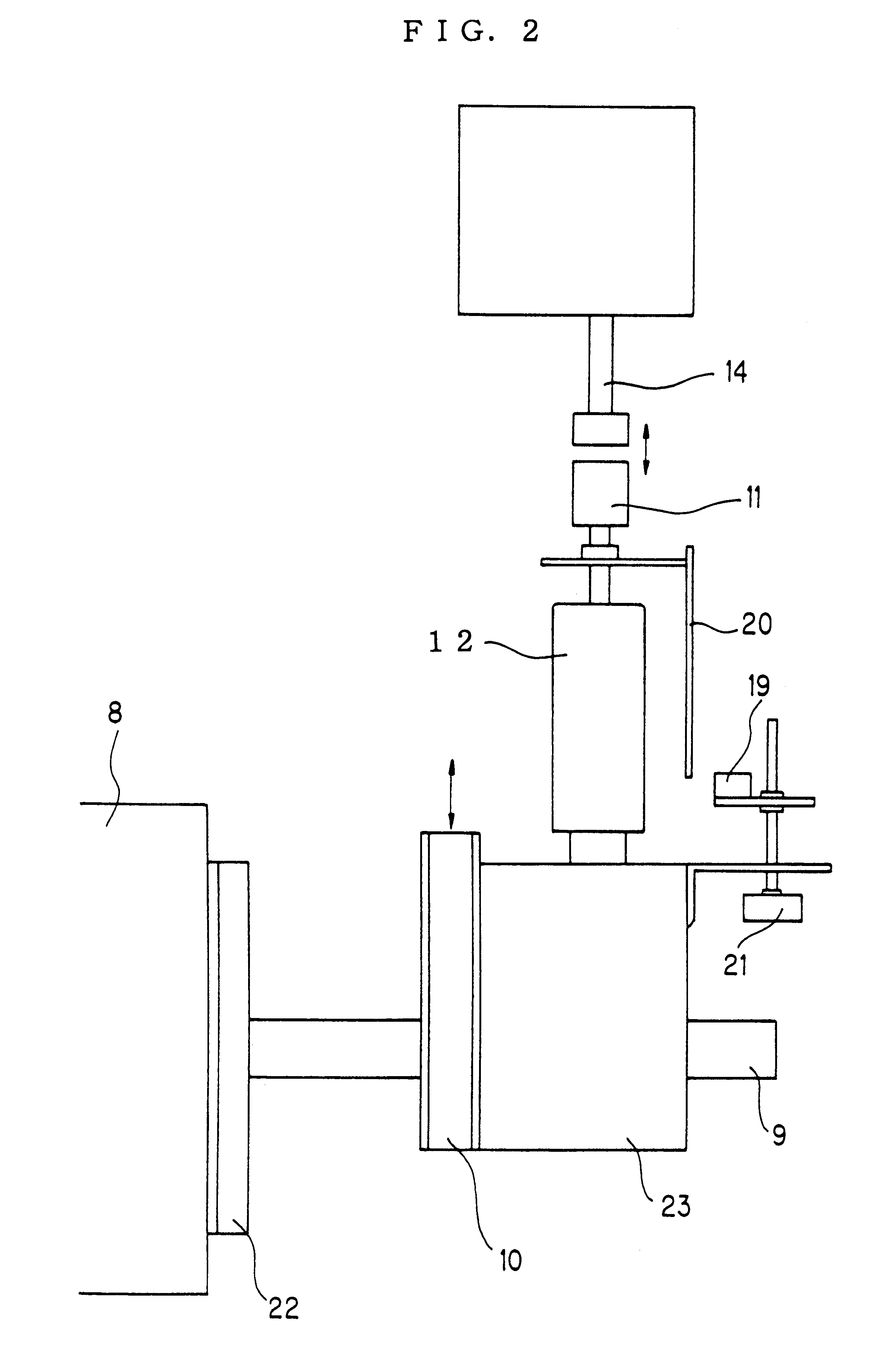Substrate or sheet surface cleaning apparatus
a surface cleaning and sub-surface technology, applied in the field of cleaning equipment, can solve the problems of increased initial cost, increased cost, and increased risk of tacky rubber rollers themselves being damaged,
- Summary
- Abstract
- Description
- Claims
- Application Information
AI Technical Summary
Benefits of technology
Problems solved by technology
Method used
Image
Examples
first embodiment
As the substrate or sheet surface cleaning apparatus 1 is provided with the above-described construction, the upper adhesive tape roll 8 is separated from the upper tacky rubber roller 4 in the beginning. When the upper pressing control mechanisms are actuated, the respective pressing rods 14,14 are brought into contact with the pressed rods 11, which are resiliently supported under expansion forces of the compression springs 13,13 in the corresponding pressed rod holders 12,12, and downwardly urge the pressed rods 11,11 while performing positional adjustment by means of the photoreflective sensor 19. As a result, the corresponding slidable bearings 10,10 precisely slide in the downward direction. Therefore, the upper adhesive tape roll 8 integrally supported on these slidable bearings 10,10 via the shafts 9,9 is brought into close contact with the upper tacky rubber roller 4 and downwardly urges the upper tacky rubber roller 4. The upper tacky rubber roller 4 supported on the slid...
second embodiment
As the substrate or sheet surface cleaning apparatus 51 according to the present invention is constructed as described above, the pressure to the substrate or sheet 2 as a material under treatment is maintained constant by the pressing control mechanisms arranged inside the cleaning apparatus 51. The substrate or sheet 2 with dirt or particles deposited on the surfaces thereof is therefore allowed to pass while being held under constant pressure between the tacky rubber rollers 4,4' the surfaces of which are always kept clean by their corresponding adhesive tape rolls 8,8', so that the dirt or particles are surely captured and removed onto the surfaces of the tacky rubber rollers 4,4'.
If the substrate or sheet 2 passes through the space 5 between the tacky rubber rollers 4,4' with its position extremely shifted either leftward or rightward relative to its advancing direction and especially when the substrate or sheet has a large thickness in the above situation, the upper tacky rubb...
PUM
 Login to View More
Login to View More Abstract
Description
Claims
Application Information
 Login to View More
Login to View More - R&D
- Intellectual Property
- Life Sciences
- Materials
- Tech Scout
- Unparalleled Data Quality
- Higher Quality Content
- 60% Fewer Hallucinations
Browse by: Latest US Patents, China's latest patents, Technical Efficacy Thesaurus, Application Domain, Technology Topic, Popular Technical Reports.
© 2025 PatSnap. All rights reserved.Legal|Privacy policy|Modern Slavery Act Transparency Statement|Sitemap|About US| Contact US: help@patsnap.com



